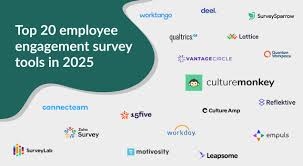
Many organizations rely on employee engagement surveys to understand workplace sentiment, but new insights reveal that most companies unintentionally undermine their own results. The findings outline 11 common mistakes that limit survey effectiveness and weaken trust, urging HR leaders to adopt continuous listening and data-driven follow-through to improve the employee experience.
Employee engagement surveys are designed to measure how connected, supported, and motivated employees feel at work. However, survey fatigue, unclear communication, and the absence of meaningful action often leave employees feeling ignored—diminishing the very engagement leaders hope to strengthen.
Employee surveys only work when organizations treat feedback as a responsibility—not a routine,” said a spokesperson from CultureMonkey. “Employees want transparency, psychological safety, and visible change. When leaders listen consistently and act honestly, engagement becomes measurable and meaningful.
11 Common Mistakes in Employee Engagement Surveys
-
Asking vague or confusing questions: Broad questions invite broad answers. Actionable insights require specificity and clarity.
-
Making surveys too long: Overly lengthy surveys lead to rushed responses and survey fatigue, lowering data quality.
-
Ignoring anonymity: When employees fear being identified, they filter their honesty. Communicating anonymity clearly increases truthfulness.
-
Running surveys only once a year: Annual check-ins miss rapidly changing workplace sentiment; shorter, more frequent listening is more effective.
-
Not explaining the purpose: Without understanding the “why,” employees disengage. Clear intent boosts participation and trust.
-
Staying silent after results: Failing to share results or next steps damages credibility. Employees want visibility into how their voice will be used.
-
Leaving managers out: Managers play a crucial role in turning data into daily action, yet many are not trained to interpret results.
-
Collecting data without action: Insights hold no value if they don’t influence decisions, priorities, or workplace programs.
-
Treating AI and analytics as optional: Modern sentiment analysis and AI tools uncover deeper emotional patterns that manual reviews often miss.
-
Using one survey for everyone: One size does not fit all. Tailored questions by department, function, or workforce type reveal more accurate realities.
-
Running surveys in isolation: Engagement must connect to culture initiatives, recognition programs, and leadership development to drive lasting change.
Employee engagement surveys are most effective when combined with a cycle of continuous listening, transparent communication, and consistent follow-through. CultureMonkey supports organizations in building that cycle by enabling leaders to interpret sentiment, identify culture gaps, and respond with agility.
About CultureMonkey
As AI transforms how employee feedback is measured, the best leaders use employee engagement survey tools to understand people, not just numbers. The future belongs to organizations that turn data into empathy and empathy into measurable outcomes.
CultureMonkey helps organizations improve employee engagement through AI-driven analytics, continuous listening, and actionable insights. The platform enables HR teams and leaders to build stronger, more connected workplace cultures rooted in transparency and trust.
Media Contact
Company Name: CultureMonkey
Contact Person: Abhinay Tayade
Email: Send Email
Country: United States
Website: https://www.culturemonkey.io/






